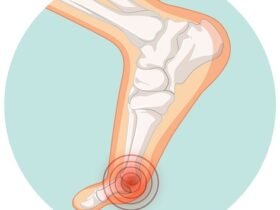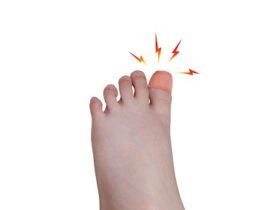Understanding the healing time required after a tooth extraction is crucial for patients undergoing this common dental procedure. Healing time can vary depending on several factors, including the type of extraction, individual healing capacity, and adherence to post-operative care instructions. Knowing what to expect during the healing process can help patients prepare for their recovery journey and manage expectations effectively.
The healing process for a tooth extraction generally takes about one to two weeks, but this can vary based on several factors.
What is Tooth Extraction?
Tooth extraction is a common dental procedure performed by a dentist or oral surgeon to remove a tooth from its socket in the jawbone. This procedure is typically necessary when a tooth is damaged beyond repair, infected, or causing overcrowding in the mouth.
In this article, we will discuss in detail the healing timeline for tooth extraction, factors that influence the healing process, and essential aftercare tips to ensure a smooth recovery.
Types of Tooth Extraction
Here are the different types of tooth extraction:
Simple Extraction
- Performed on visible teeth
- Typically done with local anesthesia
- Involves loosening the tooth with an elevator tool
- Tooth is removed using dental forceps
Surgical Extraction
- Necessary for teeth not easily accessible (e.g., impacted teeth)
- May involve making an incision in the gum
- Sometimes requires removing bone around the tooth
- Typically performed under local anesthesia, with or without sedation
Wisdom Teeth Extraction
- Often a type of surgical extraction
- Usually involves removing third molars (wisdom teeth)
- Commonly done to prevent overcrowding or alleviate pain
- May require more complex surgical procedures, especially if teeth are impacted
These types cover the common scenarios in which teeth might need to be extracted, ranging from straightforward removals to more complex surgical procedures.
Reasons for tooth extraction
Tooth extraction may be necessary for various reasons to ensure optimal oral health and prevent further complications.
Severe Tooth Decay
- Extensive decay that cannot be repaired with a filling or crown.
Gum Disease
- Advanced periodontal disease causing loosening of the teeth.
Impacted Teeth
- Teeth that are unable to erupt properly, often wisdom teeth.
Overcrowding
- Removal of teeth to create space for orthodontic treatment.
Infection
- Teeth severely infected with no successful response to root canal therapy.
Trauma or Injury
- Teeth damaged beyond repair due to accidents or injuries.
Preparation for Dentures
- Removing teeth to make way for full or partial dentures.
Non-Functional Teeth
- Teeth that do not have an opposing tooth to bite against, causing potential issues.
Failed Dental Treatment
- Teeth that have undergone failed previous dental procedures, such as unsuccessful root canals.
Cosmetic Reasons
- In some cases, teeth may be extracted for aesthetic purposes as part of a broader dental treatment plan.
These reasons highlight the various conditions and scenarios where tooth extraction might be the best or only solution for maintaining oral health.
Preparation for Tooth Extraction
Preparing for a tooth extraction involves several steps to ensure the procedure goes smoothly and to minimize complications.
- Consultation with Dentist: Discuss the reason for extraction, review medical history, and take necessary X-rays.
- Medications: Inform your dentist about any medications or supplements you are taking; follow instructions on prescribed antibiotics or pain relievers.
- Fasting: If sedation or general anesthesia is planned, follow instructions on when to stop eating and drinking before the procedure.
- Transportation: Arrange for someone to drive you home, especially if sedation or general anesthesia is used.
- Clothing: Wear comfortable, loose-fitting clothing and avoid wearing jewelry.
- Hygiene: Brush and floss your teeth thoroughly before the appointment, avoiding the extraction site if it is painful.
- Health Conditions: Inform your dentist about any existing health conditions such as diabetes, high blood pressure, or allergies.
- Aftercare Supplies: Prepare ice packs, soft foods, pain medications, and gauze pads for post-extraction care.
- Pre-Procedure Instructions: Follow any specific instructions given by your dentist or oral surgeon to ensure a smooth procedure.
Proper preparation can help reduce anxiety and promote a quicker recovery after the extraction.
How long does a tooth extraction take to heal?
The healing process for a tooth extraction typically spans several weeks, with various stages of recovery.
Initial Healing (First 24-48 hours):
- Blood clot forms at the extraction site.
- Swelling and minor bleeding are common.
- Pain and discomfort managed with prescribed pain relievers and ice packs.
Early Healing (3-7 days):
- Swelling starts to subside.
- Gum tissue begins to heal over the extraction site.
- Bruising and stiffness around the extraction area decrease.
Intermediate Healing (1-2 weeks):
- Significant reduction in pain and swelling.
- New tissue starts forming to cover the socket.
- Stitches, if present, may be removed or dissolve.
Full Healing (3-4 weeks):
- Gum tissue fully covers the extraction site.
- Bone starts to fill in the socket, though complete bone healing may take several months.
- Regular activities and diet can usually be resumed.
Complete Bone Healing (Several months):
- Bone remodeling continues to fully heal the socket.
- Site is ready for potential dental implants or other restorative treatments.
Understanding the typical healing timeline for a tooth extraction helps in setting realistic expectations and following appropriate aftercare measures to ensure a smooth recovery.
Post-Extraction Care
Proper post-extraction care is essential to promote healing and prevent complications following a tooth extraction.
Control Bleeding:
Bite on a gauze pad for 30-45 minutes immediately after the extraction.
If bleeding continues, replace the gauze and bite down firmly.
Manage Pain and Swelling:
Take prescribed pain medications as directed.
Apply an ice pack to the outside of the cheek for 10-20 minutes at a time during the first 24 hours.
Dietary Adjustments:
Stick to soft foods and liquids for the first few days.
Avoid hot, spicy, crunchy, and hard foods that could irritate the extraction site.
Maintain Oral Hygiene:
Do not rinse your mouth or spit forcefully for the first 24 hours to avoid dislodging the blood clot.
After 24 hours, gently rinse with a saltwater solution (1/2 teaspoon of salt in 8 ounces of warm water) several times a day.
Avoid Straws and Smoking:
Do not use straws for drinking, as the suction can dislodge the blood clot.
Avoid smoking or using tobacco products, which can interfere with healing.
Rest and Activity:
Take it easy for the first couple of days and avoid strenuous activities.
Keep your head elevated when lying down to help reduce swelling.
Monitor for Complications:
Be aware of signs of infection or dry socket, such as severe pain, persistent swelling, fever, or foul taste.
Contact your dentist immediately if you experience any of these symptoms.
Follow-Up Appointments:
Attend any scheduled follow-up appointments with your dentist to ensure proper healing.
Adhering to these post-extraction care guidelines helps promote a smooth and speedy recovery while minimizing the risk of complications.
Potential Complications
While tooth extraction is a common dental procedure, it carries some potential risks and complications that patients should be aware of.
Dry Socket:
- Occurs when the blood clot that forms in the socket is dislodged or dissolves prematurely.
- Results in severe pain, bad breath, and exposed bone in the socket.
Infection:
- Bacterial infection can develop in the extraction site, leading to pain, swelling, and pus discharge.
- Systemic infection may cause fever, chills, and malaise.
Nerve Damage:
- Nearby nerves, such as the inferior alveolar nerve or lingual nerve, can be damaged during the extraction.
- Results in numbness, tingling, or altered sensation in the lips, tongue, or chin.
Excessive Bleeding:
- In rare cases, heavy bleeding may occur during or after the extraction.
- Patients with bleeding disorders or those taking blood-thinning medications are at higher risk.
Damage to Adjacent Teeth or Structures:
- Nearby teeth, gums, or jawbone may be accidentally damaged during the extraction process.
- May require additional treatments or procedures to repair the damage.
Delayed Healing:
- Factors such as smoking, poor oral hygiene, or underlying medical conditions can delay the healing process.
- Prolonged pain, swelling, and discomfort may occur.
Sinus Problems (Upper Teeth):
- Extraction of upper teeth near the sinuses can sometimes lead to sinusitis or sinus perforation.
- Symptoms include congestion, pressure, and sinus drainage.
Oroantral Fistula (Upper Molars):
- Communication between the mouth and the maxillary sinus may occur if the sinus membrane is perforated during extraction.
- Results in persistent drainage of saliva or food particles into the sinus cavity.
It’s important for patients to understand these potential complications and follow their dentist’s post-extraction care instructions carefully to minimize risks and promote optimal healing. Promptly reporting any unusual symptoms or concerns to the dentist can help prevent complications from worsening.
Alternatives to Tooth Extraction
When faced with dental issues, tooth extraction may not always be the only solution. Here are some alternatives to consider:
Root Canal Therapy:
- Removes infected or damaged pulp from the tooth’s interior, allowing it to be preserved rather than extracted.
- Suitable for teeth with extensive decay or infection.
Dental Crowns:
- Used to restore and strengthen damaged or weakened teeth.
- Protects the remaining tooth structure, eliminating the need for extraction.
Fillings and Bonding:
- Repair cavities and minor tooth damage, preserving the natural tooth structure.
- Provides a durable and aesthetic solution for restoring tooth integrity.
Orthodontic Treatment:
- Corrects misaligned teeth and overcrowding, eliminating the need for extraction to create space.
- Options include braces, clear aligners, and other orthodontic appliances.
Periodontal Treatment:
- Addresses gum disease and periodontal issues, which can lead to tooth loss if left untreated.
- Scaling and root planing, gum grafting, and other procedures can save teeth from extraction.
Dental Implants:
- Replaces missing teeth without affecting adjacent teeth.
- Provides a long-term solution for tooth loss, maintaining oral function and aesthetics.
Bridge Work:
- Fills gaps caused by missing teeth by anchoring artificial teeth to adjacent natural teeth or dental implants.
- Restores chewing function and prevents adjacent teeth from shifting.
Apicoectomy:
- Surgical procedure to remove infected tissue from the root tip of a tooth, preserving the tooth rather than extracting it.
Orthodontic Extrusion:
- Gradual repositioning of a tooth to expose more of its structure, allowing for restoration rather than extraction.
Consult with your dentist to explore these alternatives and determine the most appropriate treatment plan for your specific dental needs.
FAQs about How Long Does a Tooth Extraction Take to Heal?
Initially, you may experience swelling, minor bleeding, and discomfort. Over time, these symptoms should gradually improve as the extraction site heals.
Your dentist may prescribe pain medications or recommend over-the-counter pain relievers. Applying ice packs to the outside of the cheek can also help reduce swelling and discomfort.
It’s best to rest and avoid strenuous activities for the first few days following the extraction. You can gradually resume normal activities as you feel comfortable, but avoid vigorous exercise or heavy lifting.
Stick to soft foods and liquids for the first few days, avoiding hot, spicy, crunchy, and hard foods that could irritate the extraction site. Gradually reintroduce solid foods as you heal.
Follow your dentist’s post-extraction care instructions carefully, including avoiding smoking, using straws, and rinsing or spitting forcefully. Attend any follow-up appointments as scheduled.
Contact your dentist immediately if you experience severe or worsening pain, swelling, or other unusual symptoms, as these could be signs of complications such as infection or dry socket.
You should avoid brushing the extraction site for the first 24 hours to allow the blood clot to form properly. After 24 hours, you can gently brush your teeth, being careful around the extraction site.
Some bleeding is normal immediately after the extraction, but it should gradually decrease over time. If bleeding persists or becomes excessive, contact your dentist for further guidance.
Your dentist will advise you on the appropriate timing for replacing the extracted tooth, which may depend on factors such as the healing of the extraction site and your overall oral health.
Conclusion :
The healing timeline for a tooth extraction varies depending on several factors, including the complexity of the extraction, the individual’s overall health, and adherence to post-operative care instructions. Typically, the initial healing period lasts about 1 to 2 weeks, during which the extraction site closes and begins to form a blood clot. Over the following weeks and months, new bone and gum tissue gradually fill in the empty socket, leading to complete healing. However, full recovery can take several months in some cases. It’s essential for patients to follow their dentist’s advice, maintain good oral hygiene, and attend follow-up appointments to ensure optimal healing and minimize the risk of complications.












Got a Questions?
Find us on Socials or Contact us and we’ll get back to you as soon as possible.